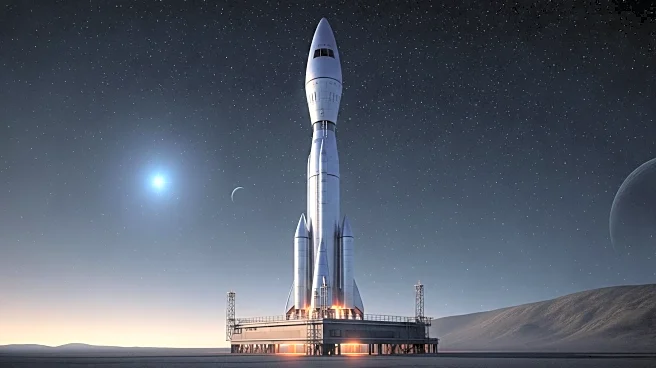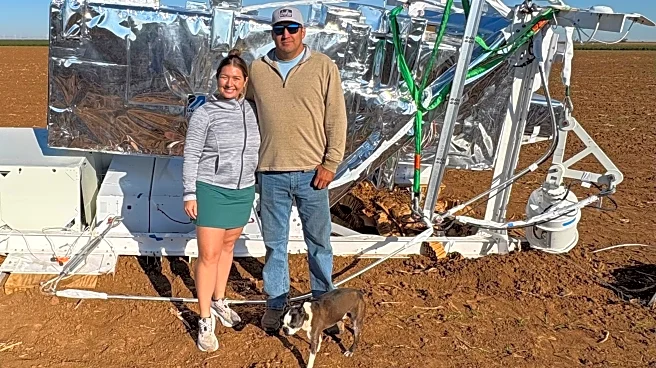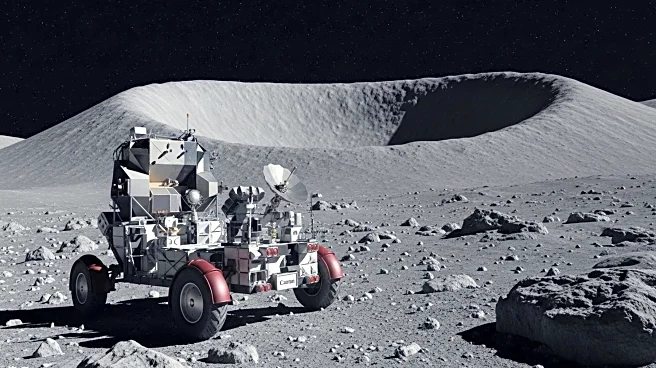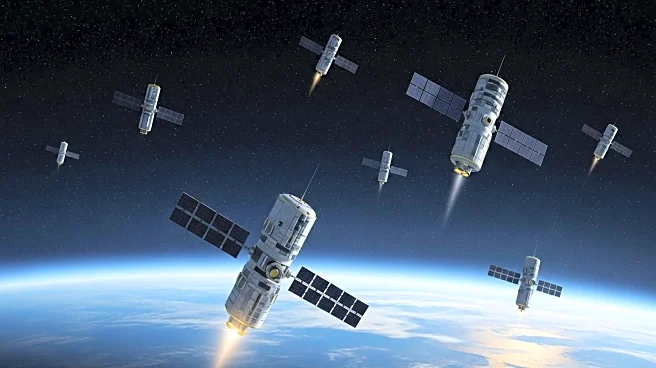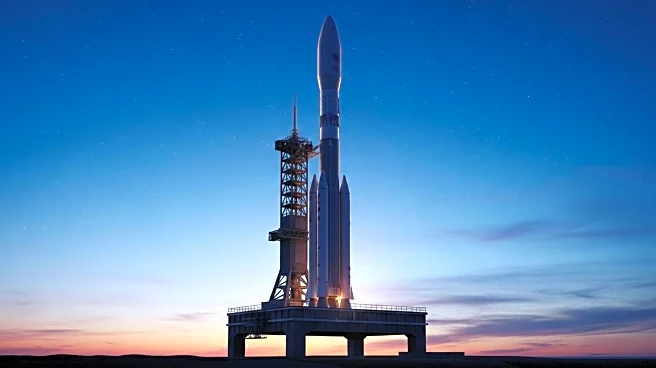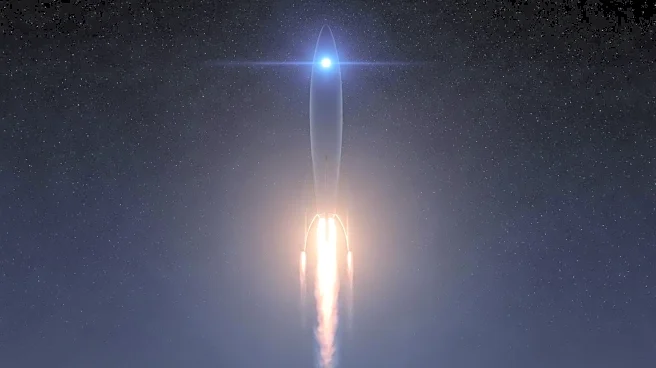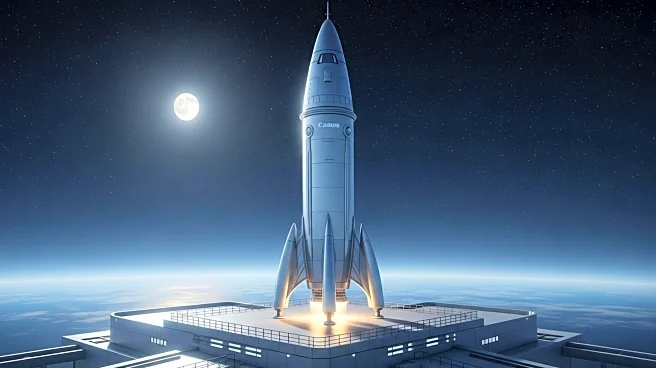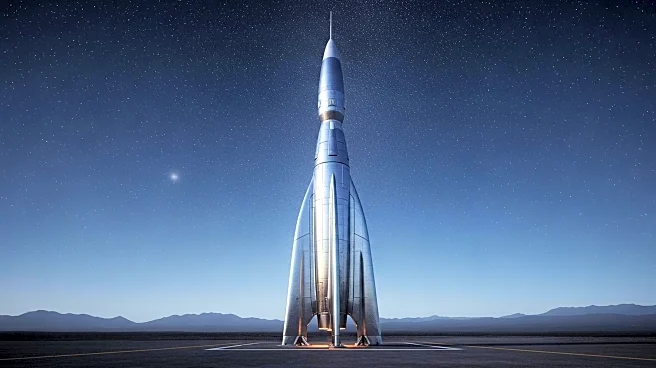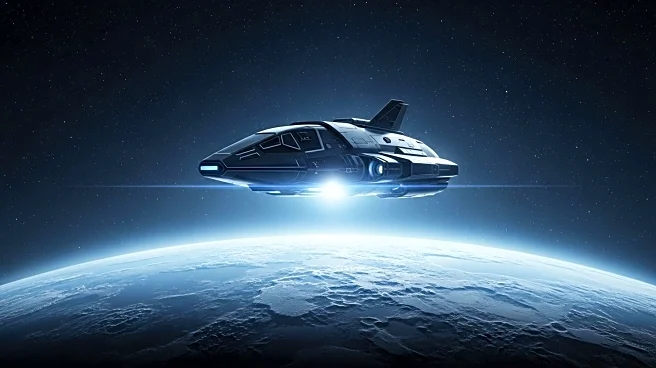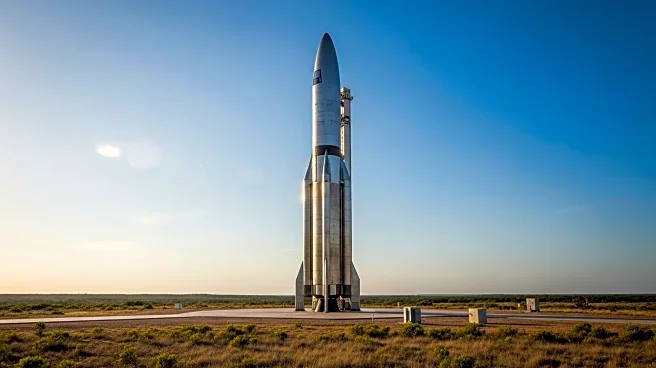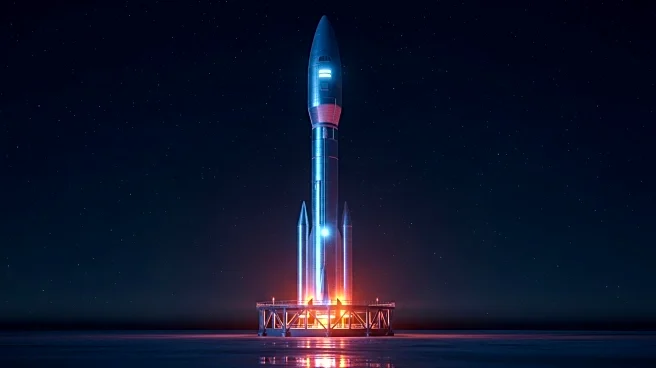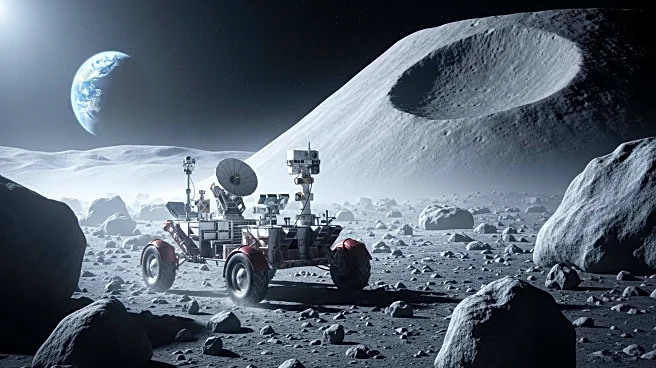What is the story about?
What's Happening?
SpaceX is set to conduct its eleventh integrated flight test of the Starship on October 13, 2025, from Starbase, Texas. This test aims to build upon previous successes and includes new objectives such as stress-testing the upper stage's heat shield by removing tiles, deploying eight Starlink simulators, and performing a dynamic banking maneuver during atmospheric reentry. The Super Heavy booster will demonstrate a novel landing burn engine configuration, transitioning from thirteen to five, then three engines, culminating in a splashdown in the Gulf of Mexico. These tests are crucial for developing a fully reusable launch system integral to NASA's Artemis program, where Starship will serve as the Human Landing System for lunar missions.
Why It's Important?
The successful execution of these tests is vital for NASA's Artemis program, which aims to return humans to the Moon. The Starship's role as the Human Landing System is pivotal, requiring in-orbit refueling and advanced landing capabilities. This development could significantly impact the future of space exploration, enabling more frequent and cost-effective lunar missions. The collaboration between SpaceX and NASA highlights the growing importance of private-public partnerships in advancing space technology and exploration.
What's Next?
Following the eleventh test flight, SpaceX plans additional missions, including a Falcon 9 launch for Project Kuiper and several Starlink missions. These activities indicate a busy schedule for SpaceX, emphasizing its role in both commercial satellite deployment and supporting NASA's lunar ambitions. The outcomes of these tests will inform future Starship missions and the Artemis program's timeline, potentially accelerating human exploration of the Moon.
Beyond the Headlines
The development of a fully reusable launch system could revolutionize space travel, reducing costs and increasing accessibility for scientific research and commercial ventures. This shift may lead to more sustainable space exploration practices and open new opportunities for international collaboration in space missions.
AI Generated Content
Do you find this article useful?
